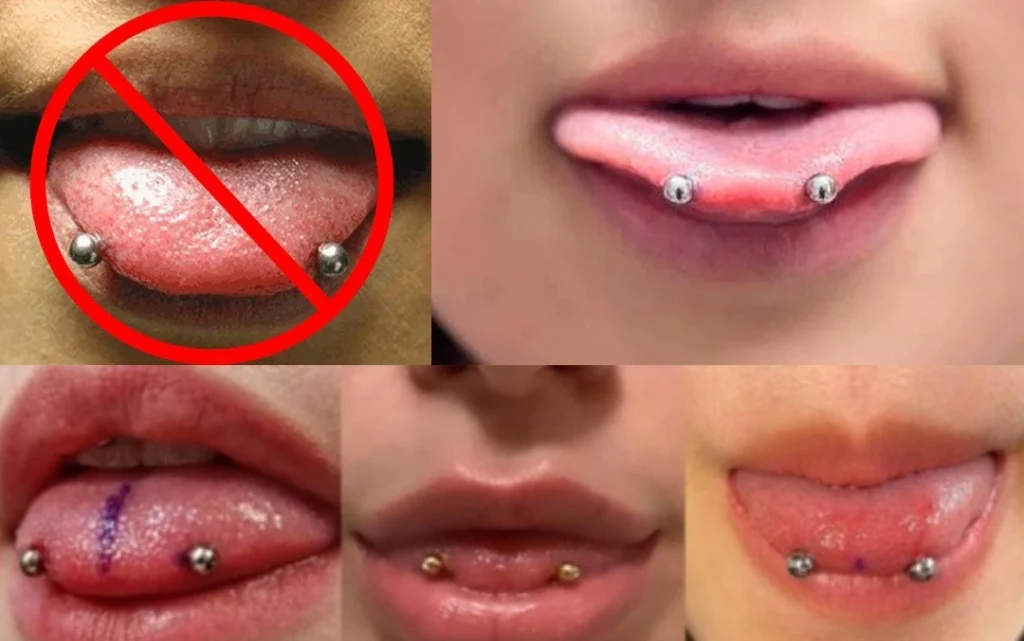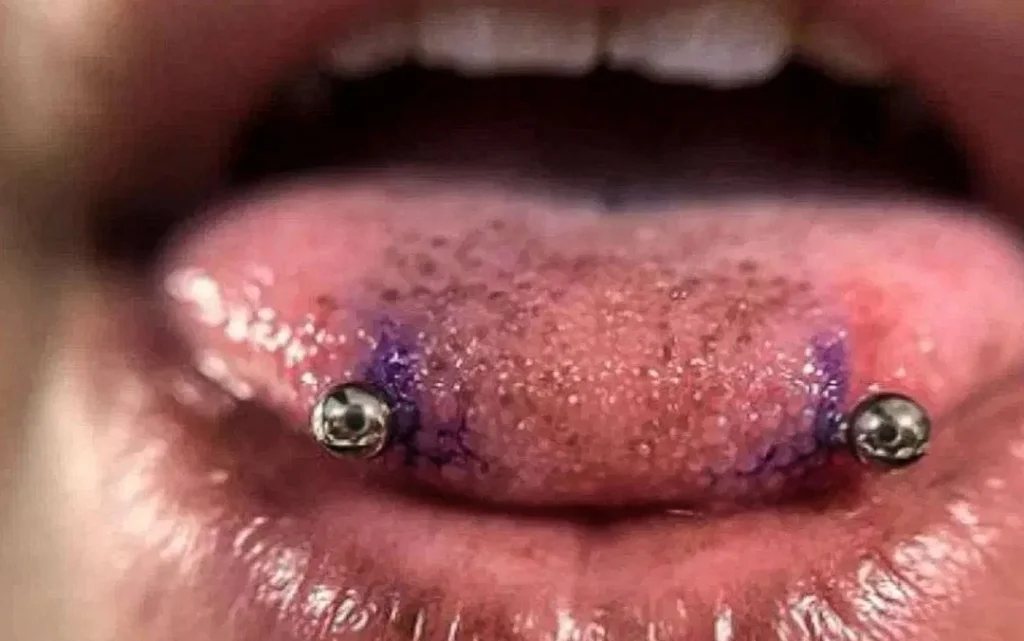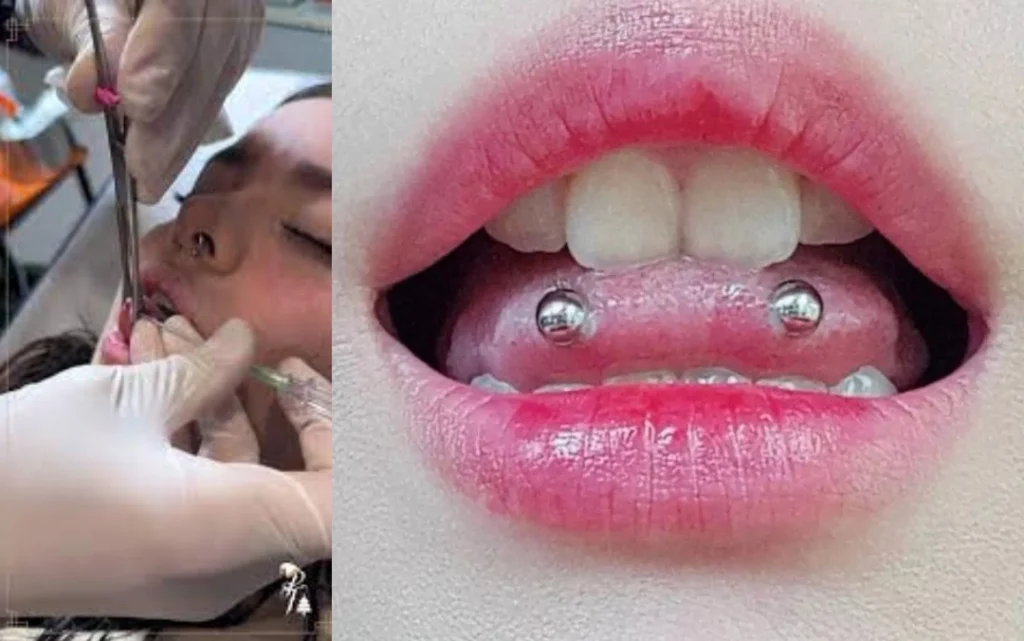Treating an infected snake eyes piercing requires careful attention and proper steps to prevent further complications. Snake eyes piercings are horizontal tongue piercings located near the tip of the tongue, making them prone to infection due to the bacteria in the mouth. Here’s a detailed guide on how to recognize, treat, and manage an infected snake eyes piercing while ensuring a smooth recovery.
How to Recognize an Infection in Snake Eyes Piercing

Look out for the following symptoms, which may indicate an infection:
- Redness and Swelling: While some redness and swelling are normal in the early stages, prolonged or worsening symptoms could signal an infection.
- Pain or Tenderness: Intense or increasing pain around the piercing area.
- Unusual Discharge: Yellow, green, or foul-smelling discharge from the piercing site.
- Fever: A rise in body temperature may indicate a systemic infection.
- Difficulty Eating or Speaking: If the infection makes tongue movement painful, it requires immediate attention.
Steps to Treat an Infected Snake Eyes Piercing

1. Do Not Remove the Jewelry
- Avoid taking out the jewelry unless instructed by a professional piercer or doctor. Removing the jewelry can trap the infection inside, causing an abscess.
2. Rinse with a Saline Solution
- Rinse your mouth with a saline solution 2–3 times daily to keep the area clean.
- DIY Saline Solution: Mix 1/4 teaspoon of non-iodized salt with 1 cup of warm distilled water.
- Swish the solution gently in your mouth for about 30 seconds, focusing on the piercing area.
3. Use Alcohol-Free Antibacterial Mouthwash
- After meals or drinks (other than water), use an alcohol-free antibacterial mouthwash to eliminate bacteria and food debris.
- Avoid mouthwashes with alcohol as they can dry out and irritate the piercing, worsening the infection.
4. Apply a Cold Compress for Swelling
- If the area is swollen, suck on ice chips or apply a cold compress externally on your cheek to reduce inflammation.
- Avoid applying ice directly to the piercing.
5. Avoid Irritants
To aid healing, steer clear of:
- Spicy or Acidic Foods: These can aggravate the infection.
- Hot Beverages and Alcohol: They can increase irritation and delay healing.
- Smoking and Vaping: Tobacco products introduce harmful bacteria and slow recovery.
6. Practice Good Oral Hygiene
- Brush your teeth gently with a soft-bristle toothbrush to avoid irritating the piercing.
- Clean your tongue carefully, avoiding unnecessary movement of the jewelry.
7. Monitor the Piercing
- Keep an eye on the symptoms. If the infection doesn’t improve within 2–3 days of proper care or if symptoms worsen, seek professional help.
When to See a Professional

If home care doesn’t show improvement or the infection worsens, consult your piercer or a healthcare provider immediately. Watch out for these serious symptoms:
- Spreading Redness or Swelling: Extending beyond the piercing area.
- Severe Pain or Persistent Discharge: Especially if accompanied by a foul odor.
- Fever or Chills: Indicating a systemic infection.
A professional may recommend:
- Topical or Oral Antibiotics: For severe infections.
- Jewelry Adjustment: If the jewelry is too tight and causing irritation.
- Piercing Removal: Only in extreme cases, under medical supervision.
How to Prevent Infections in the Future
- Follow Aftercare Instructions: Always adhere to the guidance provided by your piercer.
- Maintain Good Hygiene: Regularly clean your piercing and avoid touching it with dirty hands.
- Avoid Oral Activities: Limit kissing or sharing utensils during the healing process.
- Choose High-Quality Jewelry: Ensure the jewelry is made from biocompatible materials like titanium or surgical steel to reduce irritation.